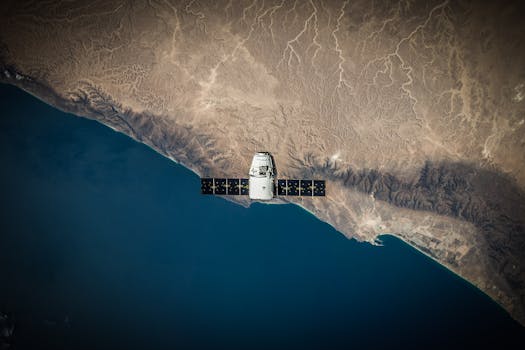
MEO Satellites: Revolutionizing Global Connectivity with Medium Earth Orbit Technology
MEO satellites, or Medium Earth Orbit satellites, are a type of satellite that operates in an orbit between 2,000 and 36,000 kilometers above the Earth’s surface. This range allows MEO satellites to provide a unique combination of global coverage, low latency, and high bandwidth, making them an attractive solution for a wide range of applications, including telecommunications, navigation, and Earth observation.
At the beginning of our discussion on MEO satellites, it is essential to understand the benefits of Medium Earth Orbit technology. One of the primary advantages of MEO satellites is their ability to provide global coverage with a relatively small number of satellites. This is because MEO satellites can see a significant portion of the Earth’s surface from their orbit, allowing them to communicate with a large number of users simultaneously. Additionally, MEO satellites have a lower latency than Geostationary Orbit (GEO) satellites, which are located much farther away from the Earth. This makes MEO satellites ideal for applications that require real-time communication, such as voice and video conferencing.
Applications of MEO Satellites
MEO satellites have a wide range of applications, including telecommunications, navigation, and Earth observation. In the telecommunications sector, MEO satellites are used to provide mobile broadband services, including voice, data, and internet connectivity. They are particularly useful in areas where traditional terrestrial infrastructure is lacking, such as in remote or rural areas. MEO satellites are also used for navigation purposes, providing location information and timing signals for a wide range of applications, including aviation, maritime, and land transportation.
In addition to telecommunications and navigation, MEO satellites are also used for Earth observation purposes. They can provide high-resolution images of the Earth’s surface, which can be used for a variety of applications, including weather forecasting, crop monitoring, and disaster response. MEO satellites can also be used to track climate change, monitor ocean health, and detect natural disasters such as earthquakes and hurricanes.
Benefits of MEO Satellites
The benefits of MEO satellites are numerous. One of the primary advantages is their ability to provide global coverage with a relatively small number of satellites. This makes them a cost-effective solution for providing mobile broadband services, particularly in areas where traditional terrestrial infrastructure is lacking. MEO satellites also have a lower latency than GEO satellites, making them ideal for applications that require real-time communication.
Another benefit of MEO satellites is their ability to provide high-bandwidth services. This makes them ideal for applications that require the transfer of large amounts of data, such as video streaming and online gaming. MEO satellites are also more resistant to interference than GEO satellites, which can be affected by interference from other satellites and terrestrial sources.
Challenges and Future Developments
Despite the many benefits of MEO satellites, there are also several challenges associated with their development and deployment. One of the primary challenges is the high cost of launching satellites into Medium Earth Orbit. This can make it difficult for companies to justify the investment in MEO satellites, particularly for small or medium-sized enterprises. Another challenge is the complexity of the technology required to operate MEO satellites. This can make it difficult for companies to develop and deploy MEO satellites, particularly those without significant experience in the field.
Despite these challenges, the future of MEO satellites looks bright. Several companies, including Amazon and SpaceX, are currently developing constellations of MEO satellites to provide global broadband services. These constellations will consist of thousands of satellites, which will work together to provide seamless coverage of the entire globe. The development of these constellations is expected to revolutionize the way we communicate and access data, providing high-speed internet connectivity to even the most remote areas of the world.






